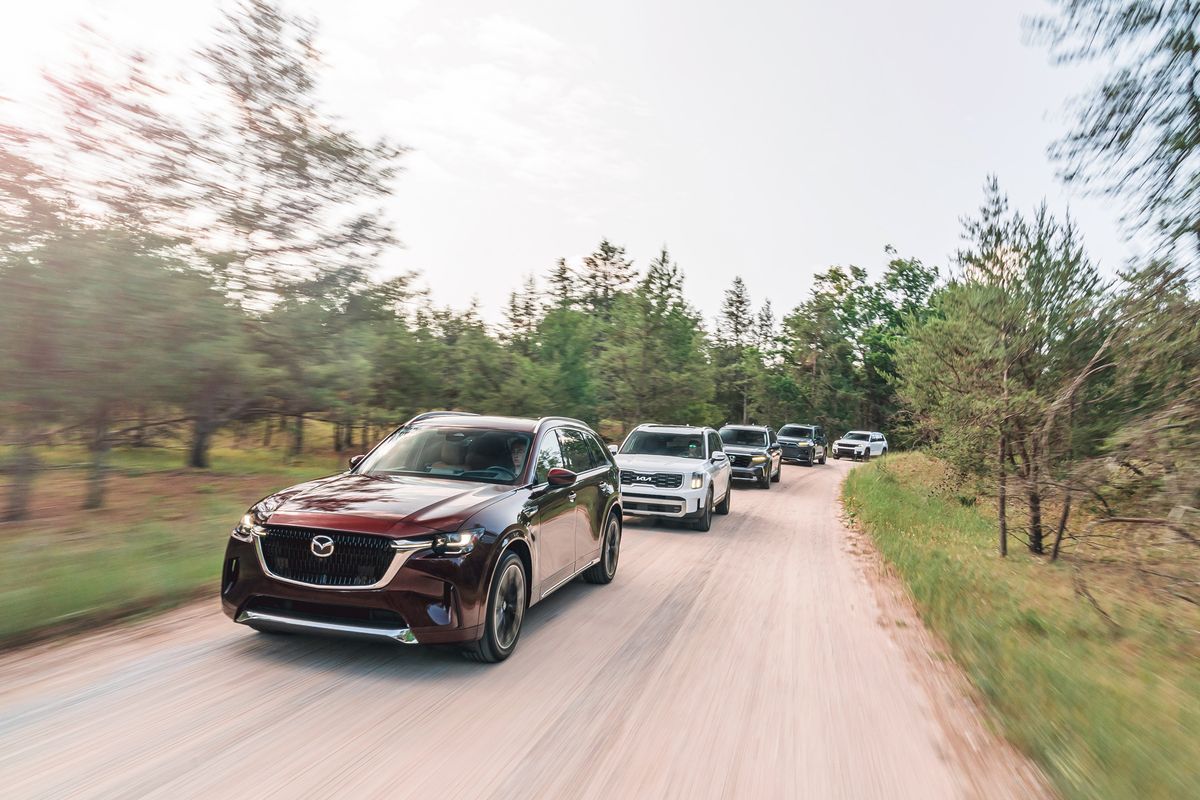The station wagon slithered out of the primordial ooze to give birth to the minivan, which was driven to extinction by the body-on-frame SUV.
Shortly after, automakers understood that all most people desire from an SUV is its appearance, which gave rise to another type of mass-market people-moving machinery: the three-row crossover.
This genetic mutation combines a buff truck demeanor with a car-like driving experience, and almost anybody can produce one—even a Bentley. As a result, the rivalry is fierce, with a new crop of applicants entering practically every year.
3rd Place: Kia Telluride
Kia’s Telluride has been such a success that a layperson would occasionally infiltrate our company convoy and confuse us. Hey, who put that Pearl Jam decal on your Telluride? Oh my, the incorrect white Telluride. Nevertheless, in this case, familiarity does not create dislike since we still adore the 10Best-winning Kia.
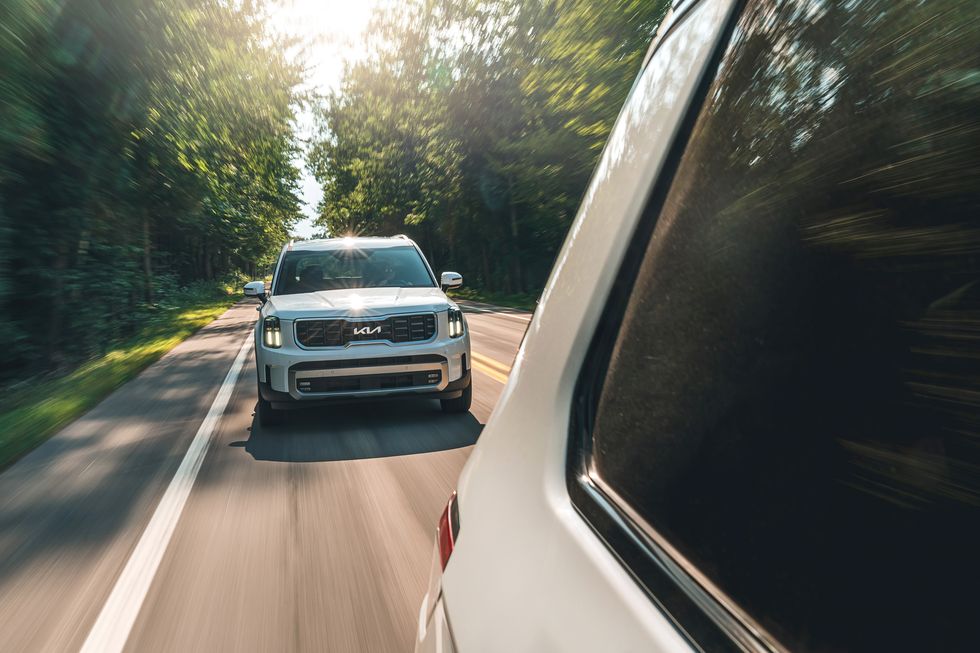
Again, we were astounded by the sheer amount of equipment packed into the Telluride while maintaining the lowest pricing, both at the base ($51,955) and as-tested ($52,970). The top-tier Telluride has leather, a faux-suede headliner, heated and ventilated first and second rows, and a panoramic roof.
The Telluride is also far more spacious inside than its outward measurements might suggest. What kind of dark magic is going on when the smallest vehicle can fit the longest piece of pipe—more than 12 feet!—inside?
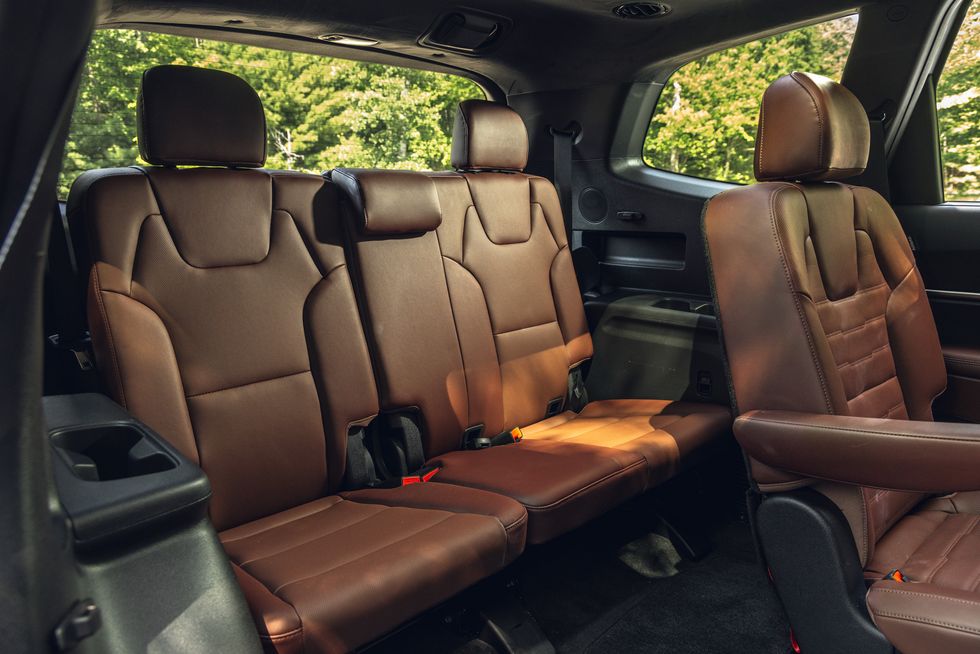
In addition, the Kia matched for #1 in front- and second-row passenger volume, as well as cargo volume behind the third row. Moreover, as we’ve said since its debut in 2020, the Telluride just feels nice.
You can tell this is a sophisticated machine designed by people who care the moment you put your hands on the wheel.
Of the complaints made only towards Telluride, one five-foot-three tester claimed that the driving posture is geared at NBA small forwards, adding, “It appears to be intended for taller, longer-legged, and larger-footed individuals.
There is no seated posture in which both my arms and legs are at ease. I end up tiptoeing around the accelerator, and my knee begins to pain.”
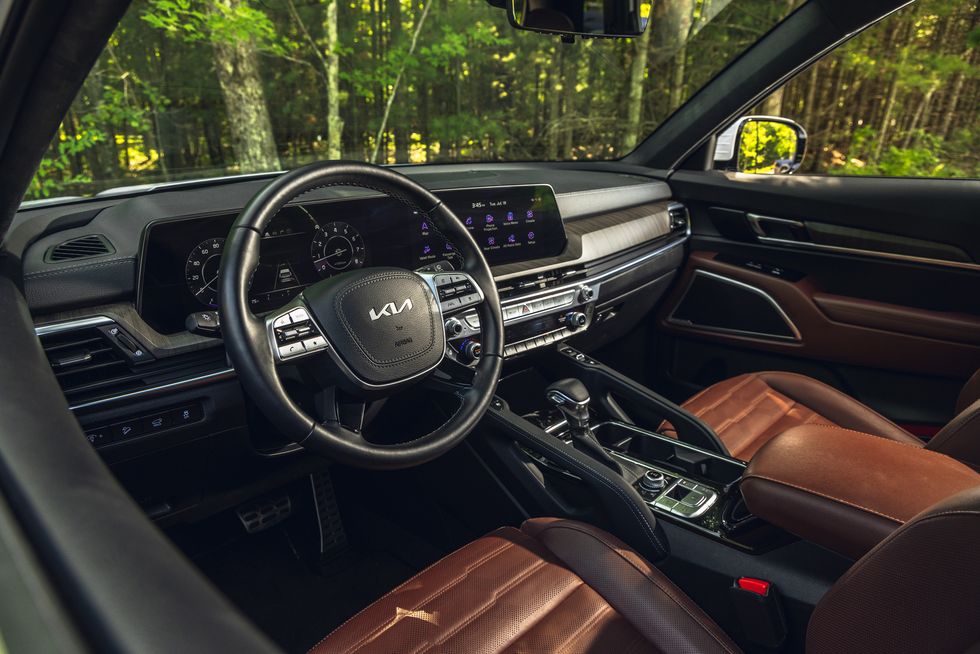
Nonetheless, most criticisms of Telluride are presented as contrasts to its newer competitors. The 291-hp V-6 engine under the hood barely provided mid-pack performance. The inside is great, although some of the materials aren’t as luxurious as those in the CX-90.
We’ve maintained that a Kia Telluride is unrivaled in its class since its introduction. We’re slightly changing that remark to suggest that you have to spend a bit more to outperform the Kia Telluride. The Telluride, on the other hand, had a target on its liftgate, and someone was going to get a direct hit. Or, as it turns out, two of them.
2nd Place: Toyota Grand Highlander
If you’ve driven a Toyota hybrid like the Prius, the Grand Highlander will completely defy your hybrid assumptions. There’s no CVT here, nor is there a rumbling natively aspirated four-cylinder.
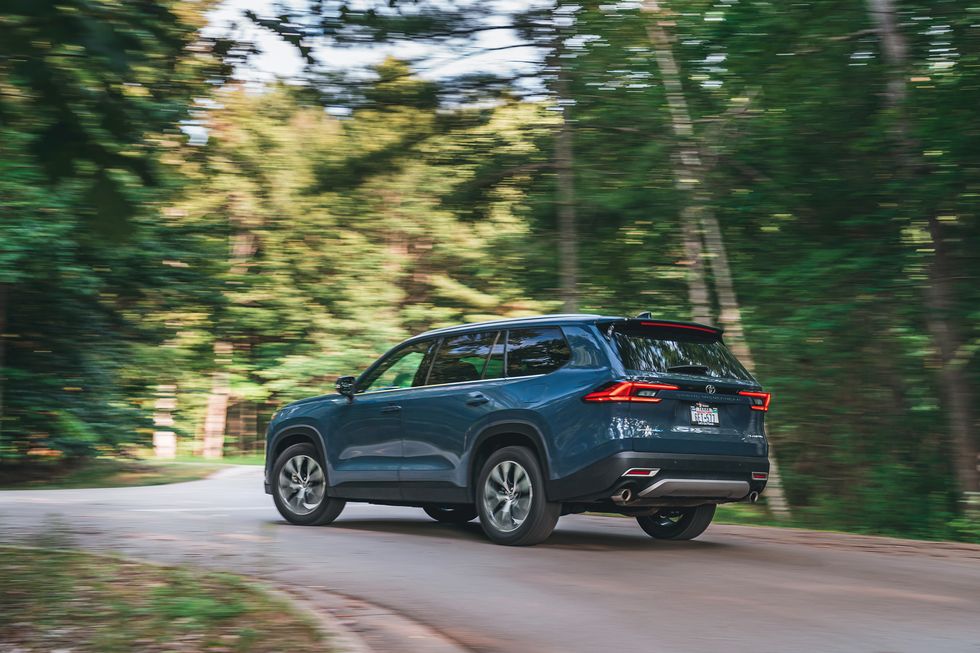
This is the Crown’s new hybrid system, and it’s a total blast. The gasoline engine is a turbocharged 2.4-liter four-cylinder, the gearbox is a six-speed automated with a wet clutch, and the overall output is a swole 362 horsepower and 400 pound-feet of torque, the latter at just 2000 rpm.
The Toyota collected pink slips from all challengers in our unscientific rolling drags on northern Michigan’s uphill passing lanes. The Toyota rushed to 60 mph in 5.6 seconds and completed the quarter-mile in 14.3 seconds at 98 mph, confirming its superiority.
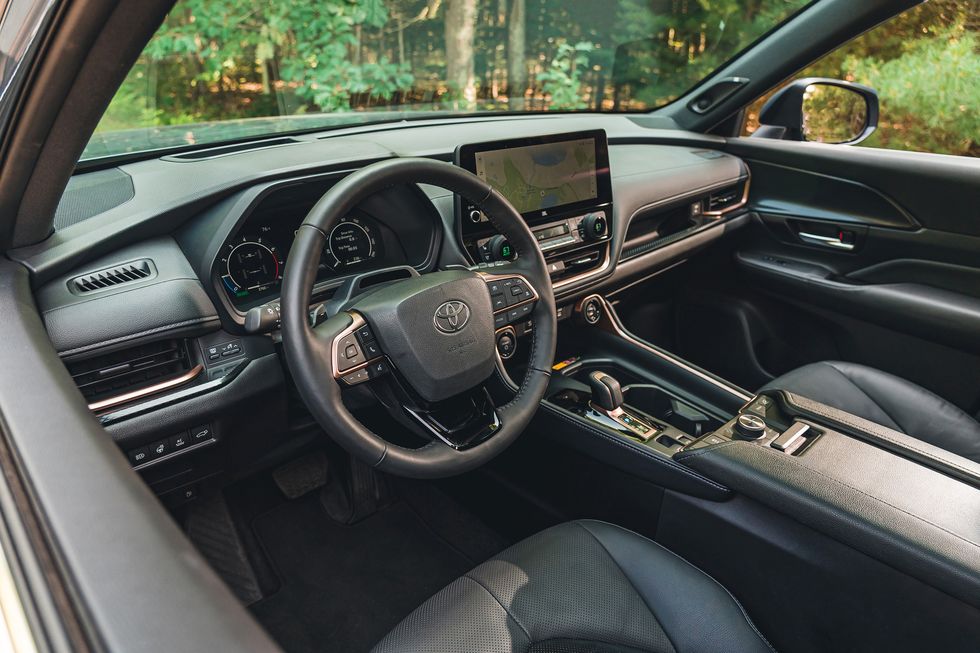
At the same time, it had the best overall fuel efficiency, with a rating of 25 mpg. This powertrain delivers on the long-promised hybrid promise of improved performance and fuel economy.
Given its size, the Grand Highlander’s zeal is even more astonishing. The Toyota took first place in practically every cargo-volume measure and could swallow the biggest flat-screen television (not quite the prototypical four-by-eight sheet of plywood, but not far off).
If only it were a bit more accommodating to human freight. The third seat would put a Naked and Afraid competitor to the test, with little legroom until the second row is all the way forward.
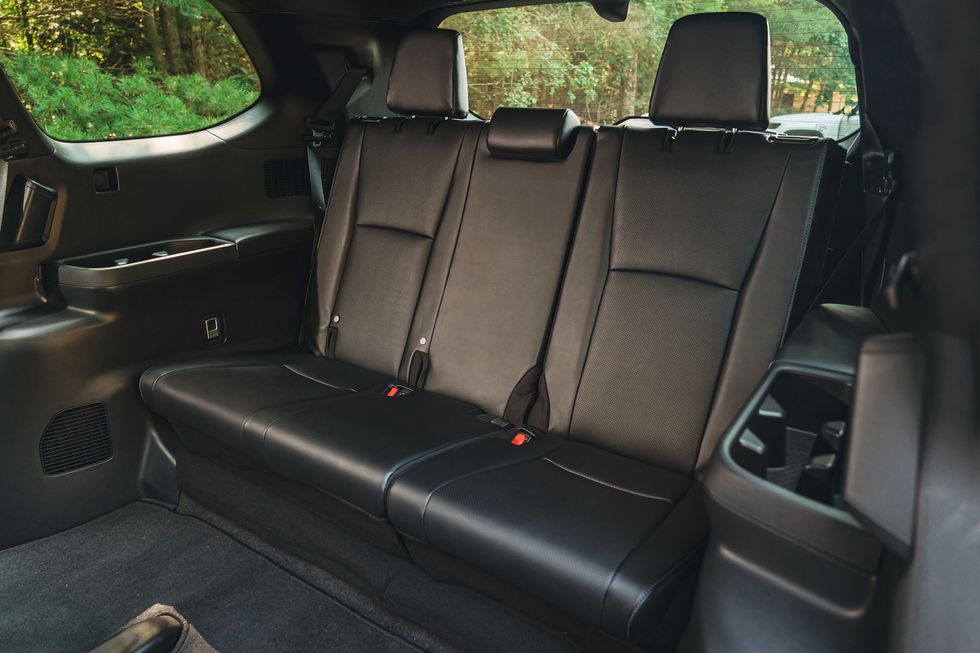
And could we really quit reinventing the shifter? Anybody coming from a Prius will recognize the configuration, but drivers arriving from the normal Highlander, which has a fully functional traditional shifter, may be perplexed.
Other than that, the inside design works well, albeit transitioning from the plushness of the CX-90 and Telluride back into the Grand Highlander reveals that Toyota is saving the nicest materials for Lexus’ equivalent, the TX.
Although a smooth ride improves interior comfort, hits reverberate loudly through the suspension and into the structure. The Grand Highlander is large, quick, and efficient, yet it falls short of being the total package.
1st Place: Mazda CX-90
You better not miss when you come to the king. It’s as if Mazda made a punch list of the Telluride’s greatest features and went down the list, item by item, and outperformed them all. The engine that is smooth and powerful?
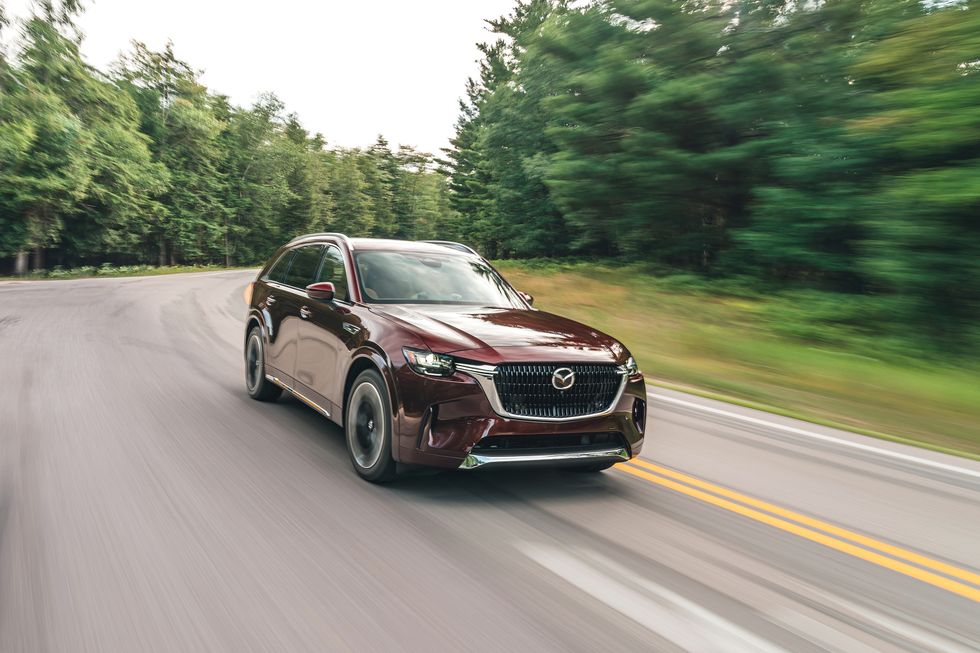
The Mazda’s turbocharged 3.3-liter inline-six produces 340 horsepower and 369 pound-feet of torque, allowing it to reach 60 mph in 6.4 seconds, second only to the Toyota. (The Mazda requires premium fuel to produce the maximum rated horsepower; on normal fuel, it produces 319 ponies.)
The CX-90 was not only the quickest to 130 mph, but it was also one of just two cars here to do so, demonstrating Mazda’s confidence in the CX-90’s high-speed stability.
Only one interior routinely prompted involuntary wows when our testers opened the crossovers’ doors for the first time—the Mazda’s, with its quilted leather and expanse of fake suede over the dash.
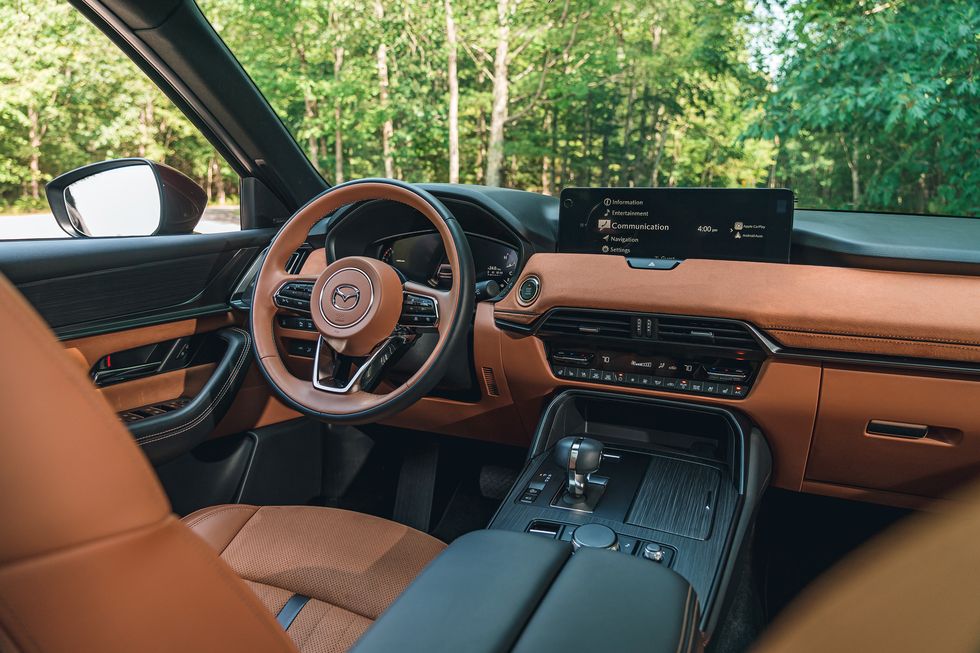
While Mazdas are known for satisfying the driver, the CX-90 also impresses the passengers. According to one logbook entry, “The second row feels the most business-like. Everything you’re seeing and touching is lovely.”
The rear-drive platform allows for a rakish long hood and sporty proportions, which are accentuated by the group’s largest tires—275/45R-21s.
When you accelerate clear of traffic, the Mazda will bark the inner rear tire, reminding you of its rear-biased all-wheel-drive system. The steering is sluggish, and the weighting is off.
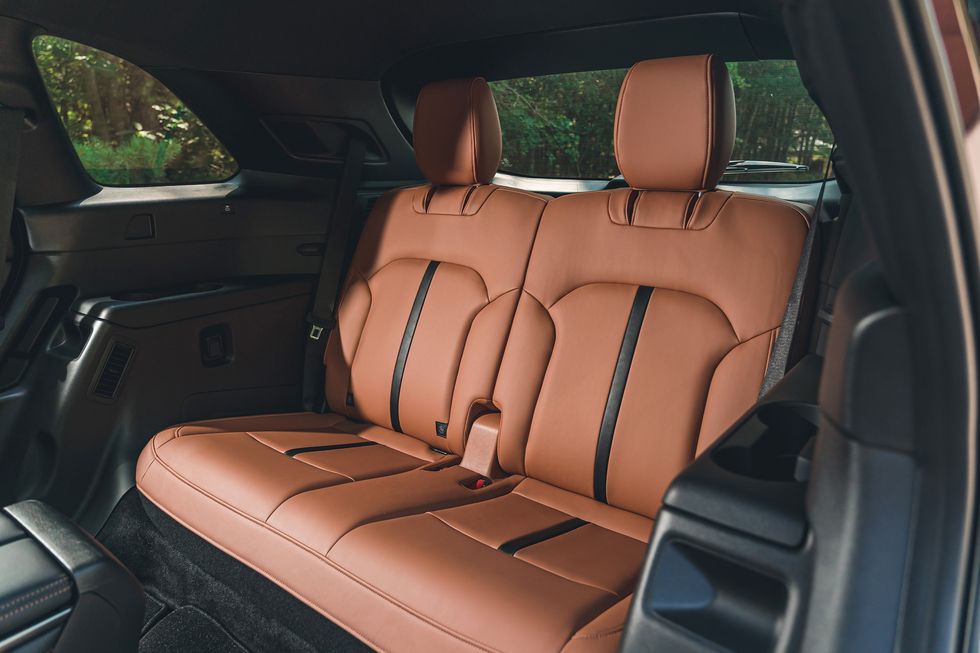
The CX-90 in this test is pricey, so any flaws are primarily financial. While the 280-hp Turbo Select model starts at $40,970, our fully equipped Turbo S Premium Plus starts at $61,920 as tested. And guess what? It’s worthwhile.

